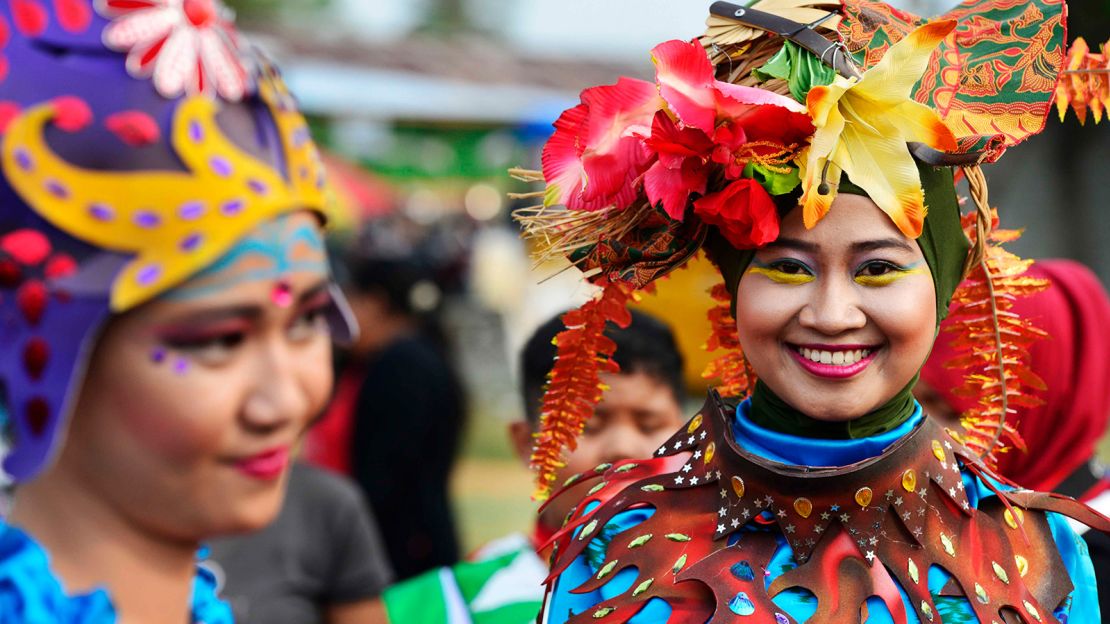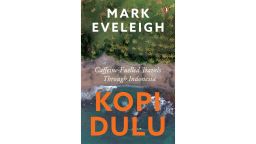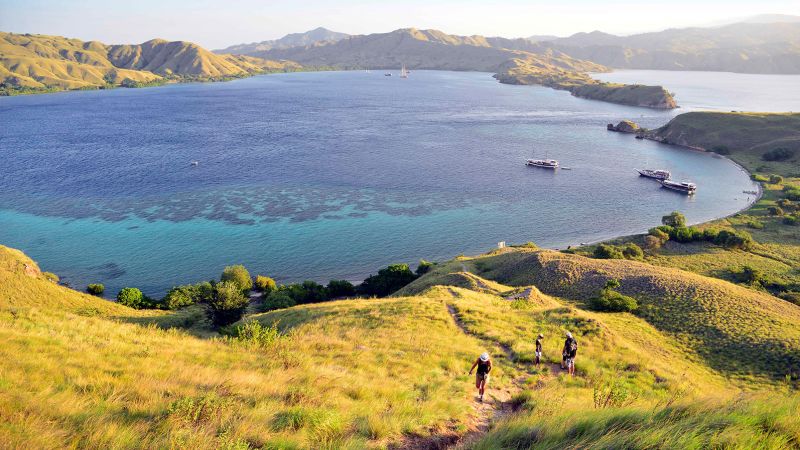Editor’s Note: This CNN Travel series is, or was, sponsored by the country it highlights. CNN retains full editorial control over subject matter, reporting and frequency of the articles and videos within the sponsorship, in compliance with our policy.
Even after traveling extensively through Indonesia for more than two decades, I sometimes struggle to grasp the true scale and diversity of the biggest island nation on the planet.
My latest travel book – “Kopi Dulu: Caffeine-fuelled Travels through Indonesia” – describes a 15,000-kilometer journey by road, rail, boat and on foot through what is often described as ‘the world’s most invisible country’.
This is the world’s fourth most populous nation (home to an estimated 10% of the world’s languages) and yet many people would struggle to find Indonesia on a map.
Kopi dulu means “coffee first” in Bahasa Indonesia – which serves as a second, unifying language to the majority of Indonesians. To me, the phrase came to sum up the attitude of unhurried hospitality that is ubiquitous among the unimaginable diversity of cultures that lie along this part of the Ring of Fire of volcanic countries around the edge of the Pacific.
Whether Muslim, Hindu, Christian or animist, it sometimes seems that little ever happens without a preliminary “cup of Java.” This was fine with me since I learned very early on in my Indonesian travels not to hurry; jam karet (rubber time) is another national catchphrase that’s an ideal antidote to the routine of our hyper-scheduled Western way of life.
I first visited Indonesia in 1995, leading an expedition through central Borneo, and have since traveled on assignments to all the major islands. I must have explored 100 or more of the almost undocumented islands and quite a few of the estimated 12,000 that are officially listed as uninhabited even today.
Skeptics will tell you that there are no unexplored regions, but Indonesia offers a level of adventure that few countries can match. My travels through the country naturally took in most of the iconic tourism hotspots (including Borobudur Temple, the Batak Highlands and Komodo) and quite a few spots that have become almost household names despite the fact that they see comparatively few international travelers (Krakatoa, Maluku’s “Spice Islands,” Borneo).
In islands where myth is sometimes indiscernible from reality I talked with Tana Toraja’s “living dead,” came face-to-face with trance-dancers in Bali and met the villagers who are literally besieged by dragons in the Komodo archipelago.
I surfed the legendary reefs of G-Land, Nias and Occy’s Left, and pioneered a previously un-surfed wave in the remote Alor Archipelago.
I searched for orangutans and tracked tigers in Sumatra and I spoke to people in communities all over the islands about the great plethora of mythical creatures, spirits and hantu (ghosts) that seem to occupy every corner of this fascinating archipelago.
While island-hopping through this sprawling chain of 13,466 islands it was of course necessary to travel frequently by boat.
The southeast coast of Sulawesi remains the traditional homeland of the Bugis, an ethnic group once famed for its feared pirates who, according to legend, brought the word “boogeyman” into a million childhood nightmares.
Today the Bugis (and the closely related Konjo people) continue to construct the majestic Sulawesi schooners that are known as phinisi.
These tall-ships, which once raced before the monsoons on raiding missions, have recently become an integral part of tourism through many of Indonesia’s remotest islands. Indo Yachts, the main site for traditional liveaboards of this sort, operates 22 of Indonesia’s finest phinisi cruisers.
These vessels often represent the only viable way for travelers to visit Indonesia’s remotest islands and they are able to bring the benefits of tourism to isolated and under-represented communities without leaving a lasting impact.
Moreover, there’s an element of irresistible romance to be had from exploring a chain of paradise islands under a full sail with your bare feet on a warm teak deck.

I explored parts of the Ring of Fire in a 65-meter luxury phinisi called Lamima (the biggest traditional Sulawesi schooner ever built) but I also often sailed in infinitely less salubrious conditions.
Among these was a traditional fishing boat, which I hired to explore the Komodo Islands and strung my hammock in the hold of a cargo-boat for a six-day voyage up Kapuas River (Indonesia’s longest, at 1,143 kilometers).
I’ve made that riverboat journey into the true heart of Borneo three times over the last two decades and have come to think of the Kapuas as the Indonesian Amazon.
Despite largescale logging and oil-palm devastation, the rainforests beyond the jungle town of Putussibau represent one of the world’s great jungle adventures. With guides from the local Da’an Dayak tribe – reputed by their neighbors to be mystics and sorcerers – I paddled dugout canoes into uncharted valleys near the very center of Borneo in search of the last of Kalimantan’s rhinos.

Indonesia is listed as the second most bio-diverse country on the planet (after Brazil) and boasts more mammal species than any other country in the world.
From the wildlife markets of North Sulawesi, to the tiger reserves of Sumatra to the marine reserves of Wakatobi, I was consistently reminded of the fact that almost a quarter of Indonesia’s 667 mammals are listed as “threatened.”
By the time I reached the most easterly extremes of the Far East – in this case at the end of a trek to the border of Papua New Guinea –I’d traveled the equivalent of a roadtrip from Seattle to Tierra del Fuego or from Paris to Bangkok.
Thanks to the warm welcome that greeted me in every community I was far from road weary, however.
In fact, I wished that I could have taken “rubber time” and twisted it around on itself… then I would happily have set off to undertake the journey all over again.
‘Kopi Dulu: Caffeine-fuelled Travels through Indonesia’, published by Penguin Random House SEA is available via https://amzn.to/3qDY5Uo (or e-book: https://amzn.to/3DlyiYX)
Read the full article here


